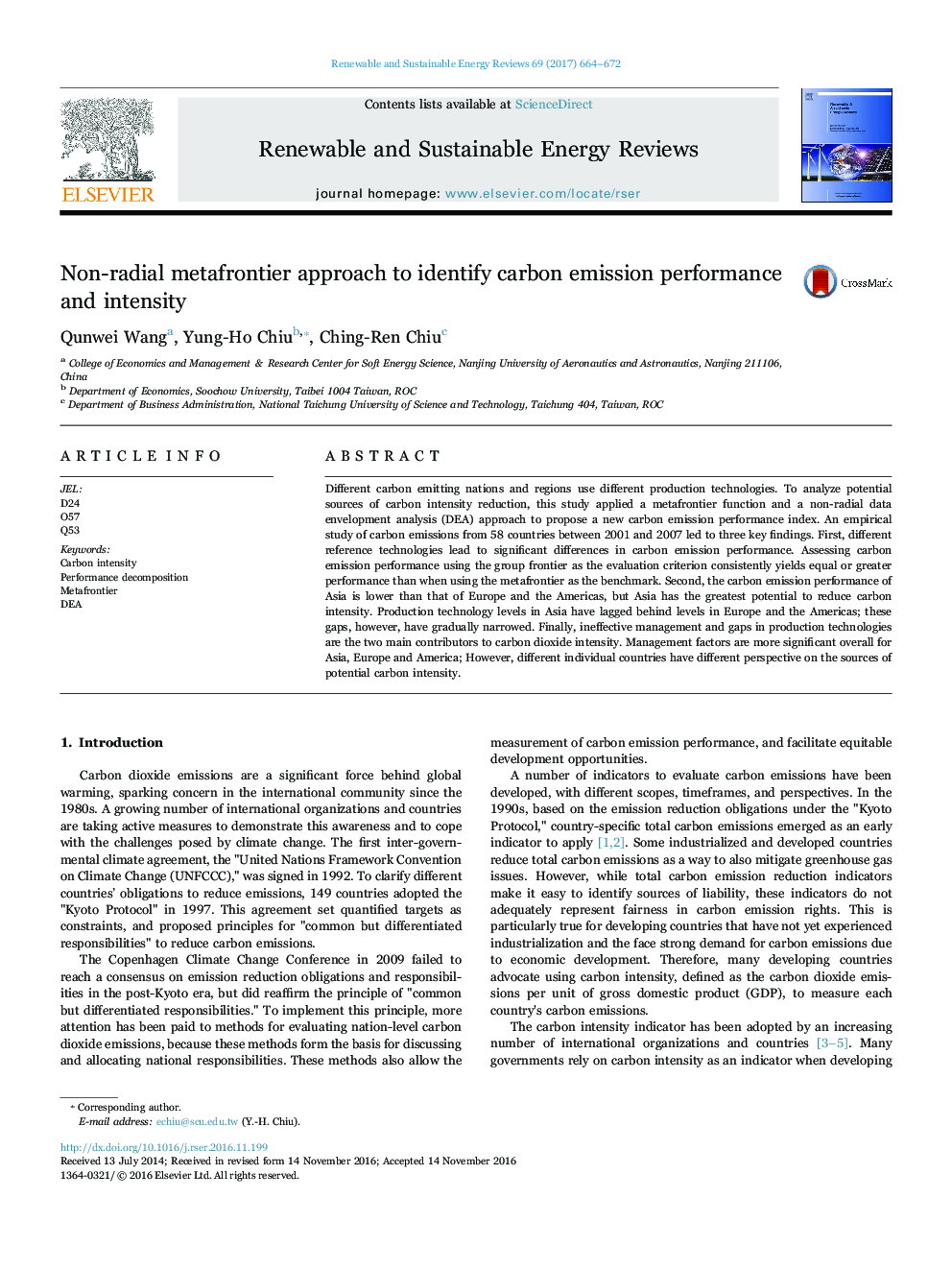| Article ID | Journal | Published Year | Pages | File Type |
|---|---|---|---|---|
| 5483362 | Renewable and Sustainable Energy Reviews | 2017 | 9 Pages |
Abstract
Different carbon emitting nations and regions use different production technologies. To analyze potential sources of carbon intensity reduction, this study applied a metafrontier function and a non-radial data envelopment analysis (DEA) approach to propose a new carbon emission performance index. An empirical study of carbon emissions from 58 countries between 2001 and 2007 led to three key findings. First, different reference technologies lead to significant differences in carbon emission performance. Assessing carbon emission performance using the group frontier as the evaluation criterion consistently yields equal or greater performance than when using the metafrontier as the benchmark. Second, the carbon emission performance of Asia is lower than that of Europe and the Americas, but Asia has the greatest potential to reduce carbon intensity. Production technology levels in Asia have lagged behind levels in Europe and the Americas; these gaps, however, have gradually narrowed. Finally, ineffective management and gaps in production technologies are the two main contributors to carbon dioxide intensity. Management factors are more significant overall for Asia, Europe and America; However, different individual countries have different perspective on the sources of potential carbon intensity.
Related Topics
Physical Sciences and Engineering
Energy
Renewable Energy, Sustainability and the Environment
Authors
Qunwei Wang, Yung-Ho Chiu, Ching-Ren Chiu,
